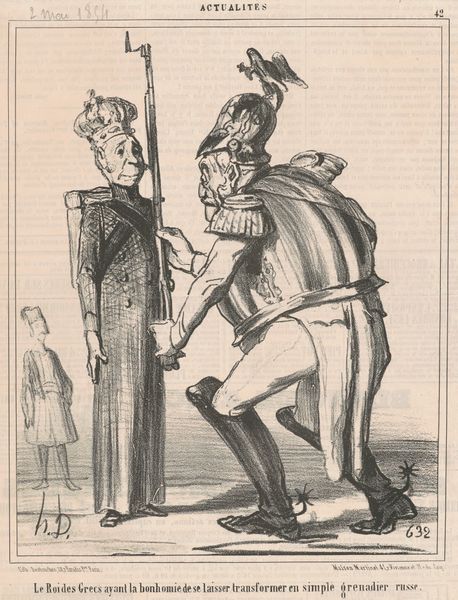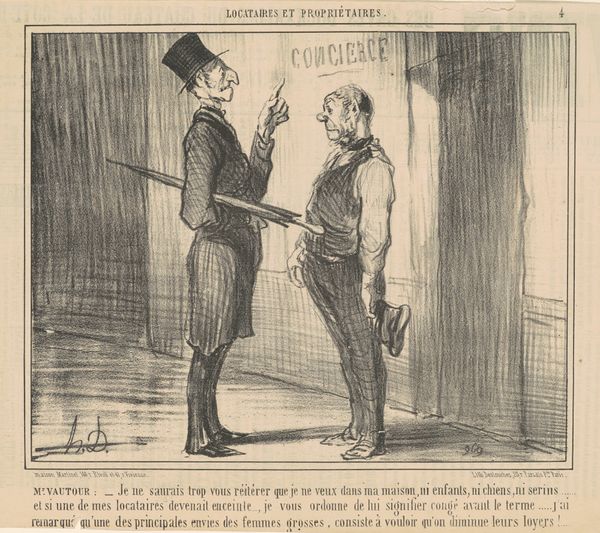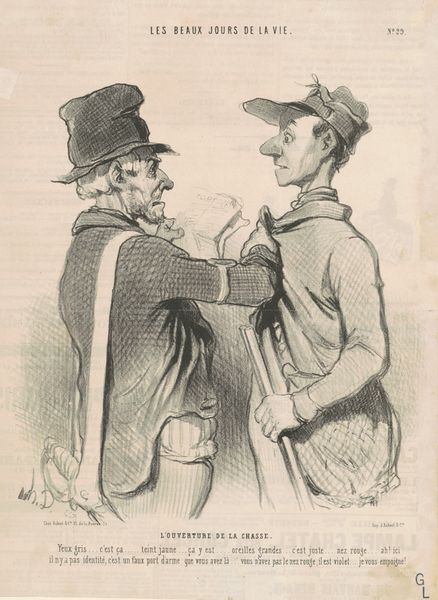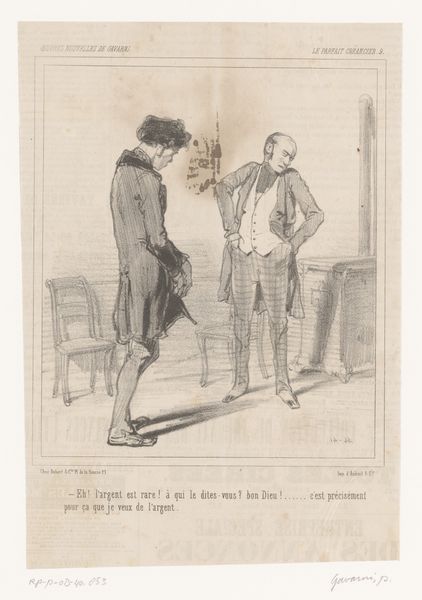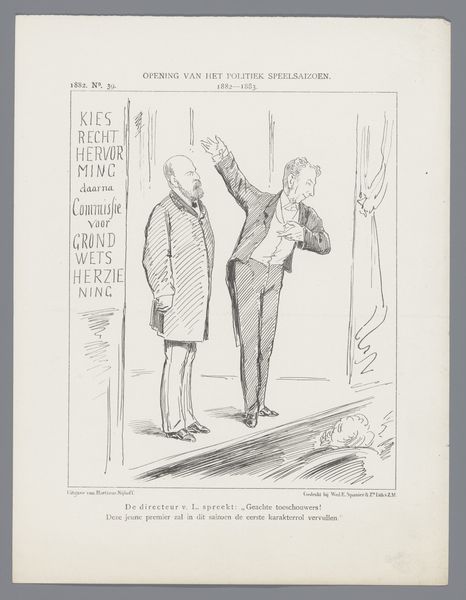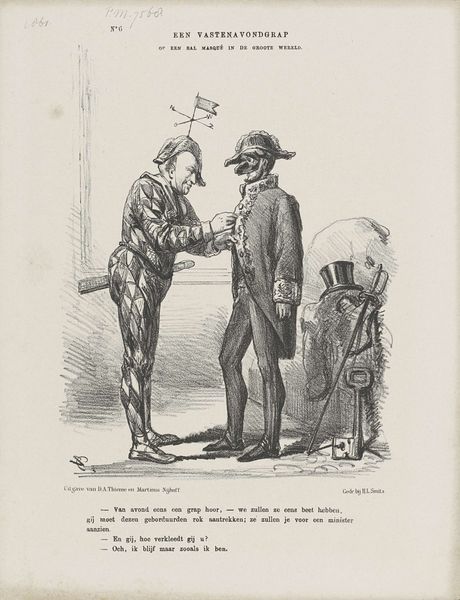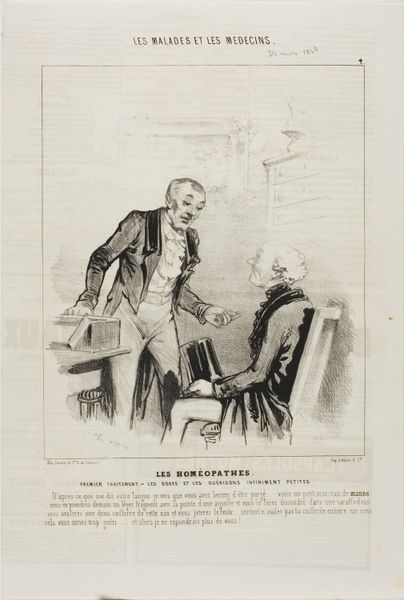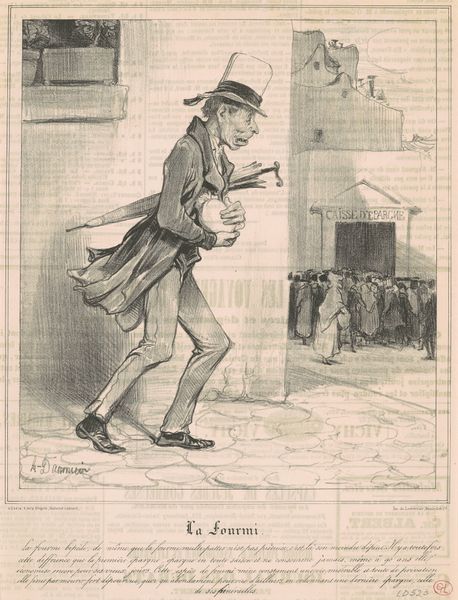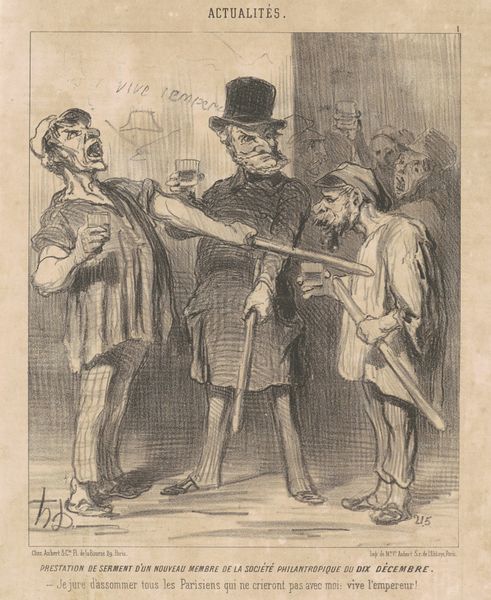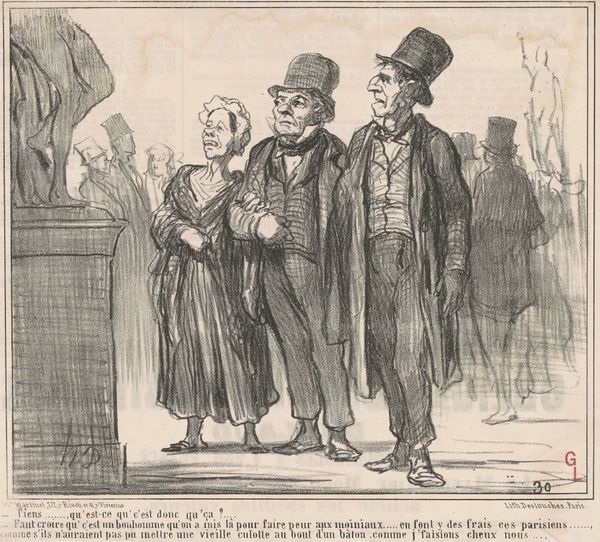
Mon bon ami, faites-moi le plaisir de signer ... c. 19th century
0:00
0:00
Copyright: National Gallery of Art: CC0 1.0
Curator: Let’s discuss Honoré Daumier’s lithograph, “Mon bon ami, faites-moi le plaisir de signer ...”, from the 19th century. It’s a powerful piece, especially considering the context of the fight for mandatory education in France at the time. Editor: The stark monochrome really grabs me. It’s all about contrast—both in light and shadow, but also in the figures themselves. You have this tall, almost comically severe man towering over someone much shorter, looking very reluctant. What materials would he have used to make this, besides the stone? Curator: The materiality would center around lithographic crayon or tusche, applied to the limestone to create the image. But Daumier wasn’t simply reproducing an image. He was engaging with ideas of power and resistance, exploring the complex layers of society. Think about who benefits and suffers from mandated education – or lack thereof. His caricature critiques the established order. The physical properties enabled mass dissemination, but the content… it challenged hierarchies and systems. Editor: True. There is definitely class critique here. It looks like it would've been printed directly in a journal or newspaper. It really challenges the fine line between high art and social commentary; the accessibility created a broader platform. What is going on with the one fellow’s head? That elongated hat shape looks almost like an enormous baguette. Curator: The hat and general stylization add to the humor, making the point more accessible while, at the same time, layering complexity. The text even tells us part of the story: "My good friend, please sign this petition against compulsory education." The man he asks replies that he cannot, because he can't write. There are very pointed ironies and juxtapositions at play. Editor: Exactly! It connects with broader issues about the material conditions affecting education, and who has access. How much does Daumier’s other work reflect these ideas? I am so curious if the style evolved in the same direction as his sociopolitical awareness did. Curator: Consistently throughout Daumier’s career, you find social and political commentary that seeks to address and reveal inequities within society. Editor: That contextual grounding is powerful. Looking at the work now, I am far more intrigued than I initially thought!
Comments
No comments
Be the first to comment and join the conversation on the ultimate creative platform.

